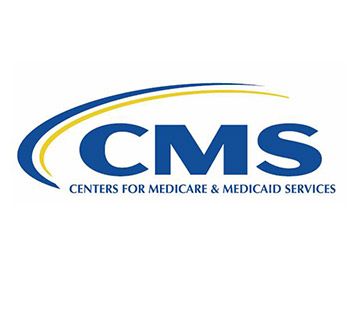Preliminary Estimate of 2018 Medicare Rates
A Preliminary Estimate of 2018 Medicare Rates
In this blog, I will provide a preliminary estimate of the Ambulance Inflation Factor (AIF) for calendar year 2018. The AIF is main factor that determines the increase (or decrease) in Medicare’s payment for ambulance services.
Calculating the 2018 AIF
The AIF is calculated by measuring the increase in the consumer price index for all urban consumers (CPI-U) for the 12-month period ending with June of the previous year. For 2018, this means the 12-month period ending on June 30, 2017. Starting in calendar year 2011, the change in the CPI-U is reduced by a so-called “productivity adjustment”, which is equal to the 10-year moving average of changes in the economy-wide private nonfarm business multi-factor productivity index (MFP). The resulting AIF is then applied to the conversion factor used to calculate Medicare payments under the Ambulance Fee Schedule.
The formula used to calculate the change in the CPI-U is limited to positive increases. Therefore, even if the change in the CPI-U was negative over a 12-month period (a rarity in the post-war era), the change in the CPI-U cannot be negative. However, when the MFP reduction is applied, the statute does permit a negative AIF for any calendar year. That is precisely what occurred in 2016, where the change in the CPI-U was 0.1% and the MFP was 0.5%. As a result, the industry saw an overall reduction in its Medicare rates of 0.4%.
Based on current data, it is highly unlikely that the AIF will be negative in 2018. For the 12-month period ending in June 30, 2017, the Bureau of Labor Statistics (BLS) currently calculates the change in the CPI-U to be approximately 1.6%.
CMS has yet to release its estimate for the MFP in calendar year 2018. However, assuming CMS’ projections for the MFP are similar to last year’s projections, the 2018 MFP is likely to be in the 0.3% to 0.5% range.
Therefore, at this time, my best guess is that the 2018 Ambulance Inflation Factor will be a positive 1.1% to 1.3%.
Please note that this estimate assumes the Bureau of Labor Statistics does not subsequently revise its inflation estimates. Please note further that this projection is based on the MFP being similar to last year. To the extent either of these numbers changes in the coming months (up or down), my estimate of the 2018 AIF would need to be adjusted accordingly. Ultimately, the 2018 AIF will be finalized by CMS by Transmittal, which typically occurs in the early part of the 4th quarter.
Impact on the Medicare Ambulance Fee Schedule
Assuming all other factors remained the same, calculating your 2018 Medicare rates would be a relatively simple exercise, i.e., you would simply add 1.1 to 1.3% to your 2017 rates. However, as part of its 2018 Physician Fee Schedule Proposed Rule (issued July 21, 2017), CMS proposed minor changes to the GPCIs. These changes can be viewed by going to the Physician Fee Schedule page on the CMS website, and clicking the link for the “CY 2018 PFS Proposed Rule Addenda” (located in the Downloads section). You would then need to open the file for “Addendum E_Geographic Practice Cost Indicies (GPCIs).”
If the PE GPCI in your area is proposed to increase, you can expect your 2018 Medicare rates to increase by slightly more than 1.1 – 1.3%. If the PE GPCI in your area is proposed to decrease, you can expect your 2018 Medicare rates to increase by slightly less than 1.1 to 1.3%.
If you are looking for a more precise calculation of your rates, you will need to use the following formulas:
Ground Ambulance Services
Medicare Allowable = (UBR x .7 x GPCI) + (UBR x .3)
Air Ambulance Services
Medicare Allowable = (UBR x .5 x GPCI) + (UBR x .5)
In this formula, the “UBR” stands for the unadjusted base rate for each HCPCS code. These are calculated by multiplying the national conversation factor by the relative value unit assigned to each base rate. To save some time, estimates for the 2018 unadjusted base rates are reproduced below (using the low-end estimate for the AIF):
| Base Rate (HCPCS Code) | 2018 Unadjusted Base Rate |
| BLS non-Emergency (A0428) | $224.74 |
| BLS emergency (A0429) | $359.58 |
| ALS non-emergency (A0426) | $269.68 |
| ALS emergency (A0427) | $427.00 |
| ALS-2 (A0433) | $618.02 |
| Specialty Care Transport (A0434) | $730.39 |
| Paramedic Intercept (A0432) | $393.29 |
| Fixed Wing (A0430) | $3,049.69 |
| Rotary Wing (A0431) | $3,545.72 |
Plugging these UBRs into the above formulas will result in adjusted base rates for each level of ground and air ambulance service. The final step is to apply whatever temporary adjustments are in effect under the Medicare Ambulance Fee Schedule. For example, in 2017, there were adjustments in place for urban (2%), rural (3%) and super-rural (22.6% over the corresponding rural rate) transports. Note: these temporary adjustments are currently set to expire on December 31, 2017. Therefore, absent further legislation, they should not be added to the adjusted base rates for 2018.
2018 Projected Rates for Mileage:
At this time, I am estimating the following rates for Medicare mileage:
| Base Rate (HCPCS Code) | 2018 Unadjusted Base Rate |
| Ground Mileage – Urban | $7.23 |
| Ground Mileage – Rural Miles 1 – 17 | $10.84 |
| Ground Mileage – Rural Miles 18+ | $7.23 |
| Fixed Wing Mileage – Urban | $86.5 |
| Fixed Wing Mileage – Rural | $12.98 |
| Rotary Wing Mileage – Urban | $23.09 |
| Rotary Wing Mileage – Rural | $34.64 |
Please keep in mind that a number of assumptions went into these projections. The Bureau of Labor Statistics can revise its inflation figures in the coming months. CMS may announce an MFP projection that differs from what we expect. CMS may also announce that it is electing not to finalize its proposed changes to the GPCI (highly unlikely). If any of these assumptions was to change, these projections would need to be revised. Therefore, I would suggest that you view these as rough estimates at best. The AAA will update members as more information becomes available in the coming months.
Have an issue you would like to see discussed in a future Talking Medicare blog? Please write to me at bwerfel@aol.com.














